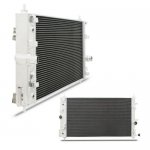vyv_cox
Well-Known Member
Canal boats and yachts differ considerably. The short exhaust pipe on a canal boat does not normally pass through accommodation or lockers, whereas on most yachts it does. The length of pipe is an issue if the engine is on sufficiently flexible mountings, fatigue fracture being a real possibility.
My gas welding is ok, I TIG weld using argon. My hot exhaust experience is with small motorboats. It is not a system I would recommend. And over many years I have had very few problems with wet exhausts, or with directly or indirectly cooled engines.
My gas welding is ok, I TIG weld using argon. My hot exhaust experience is with small motorboats. It is not a system I would recommend. And over many years I have had very few problems with wet exhausts, or with directly or indirectly cooled engines.

